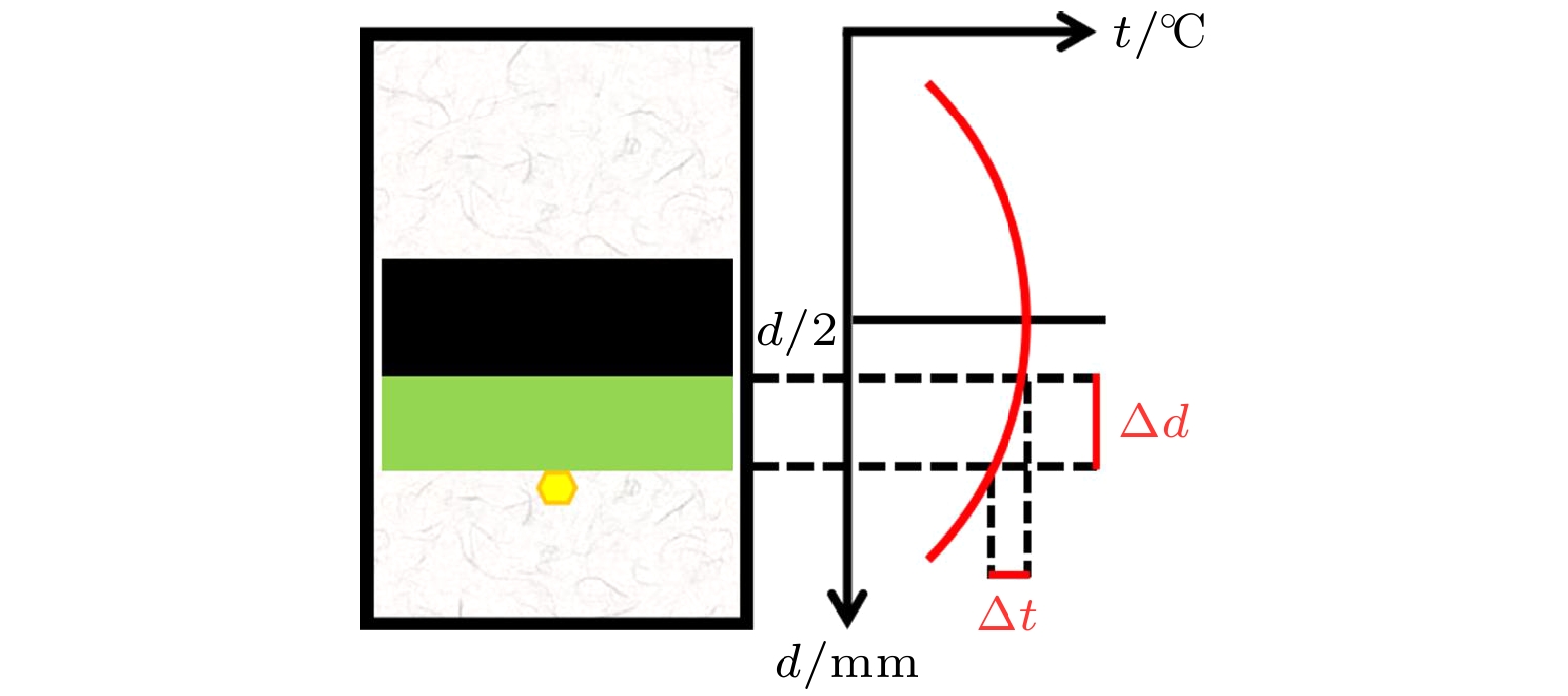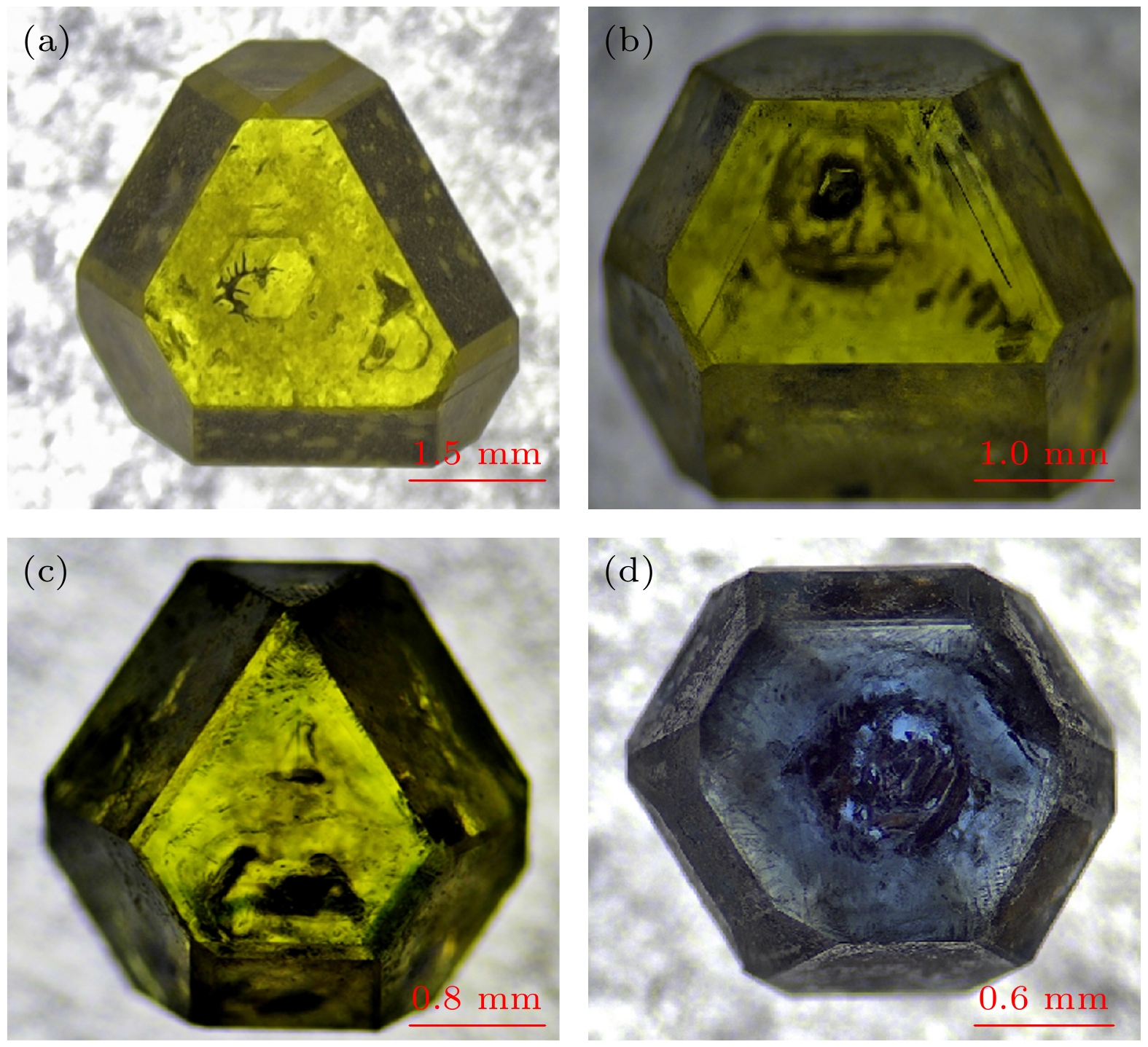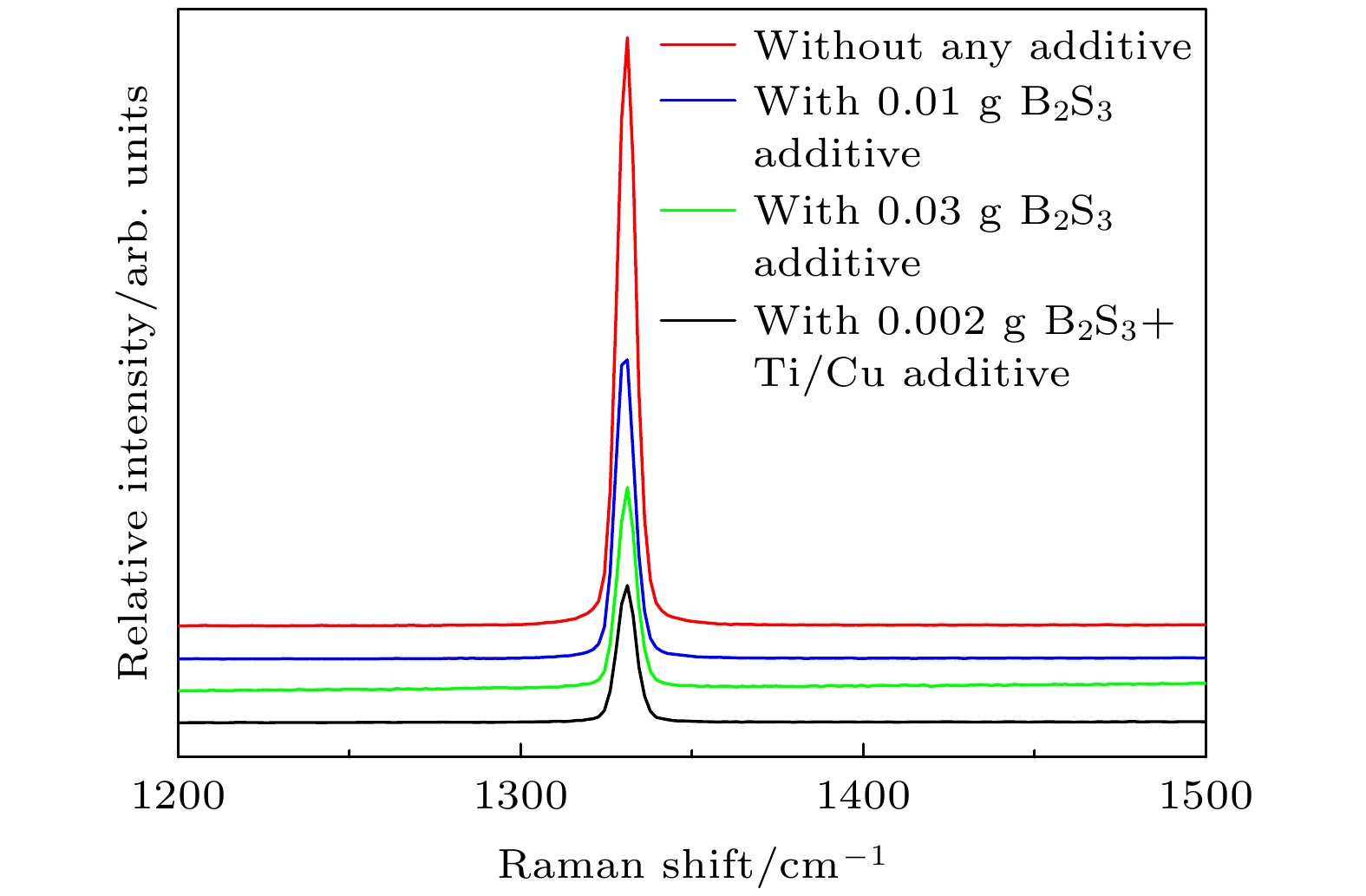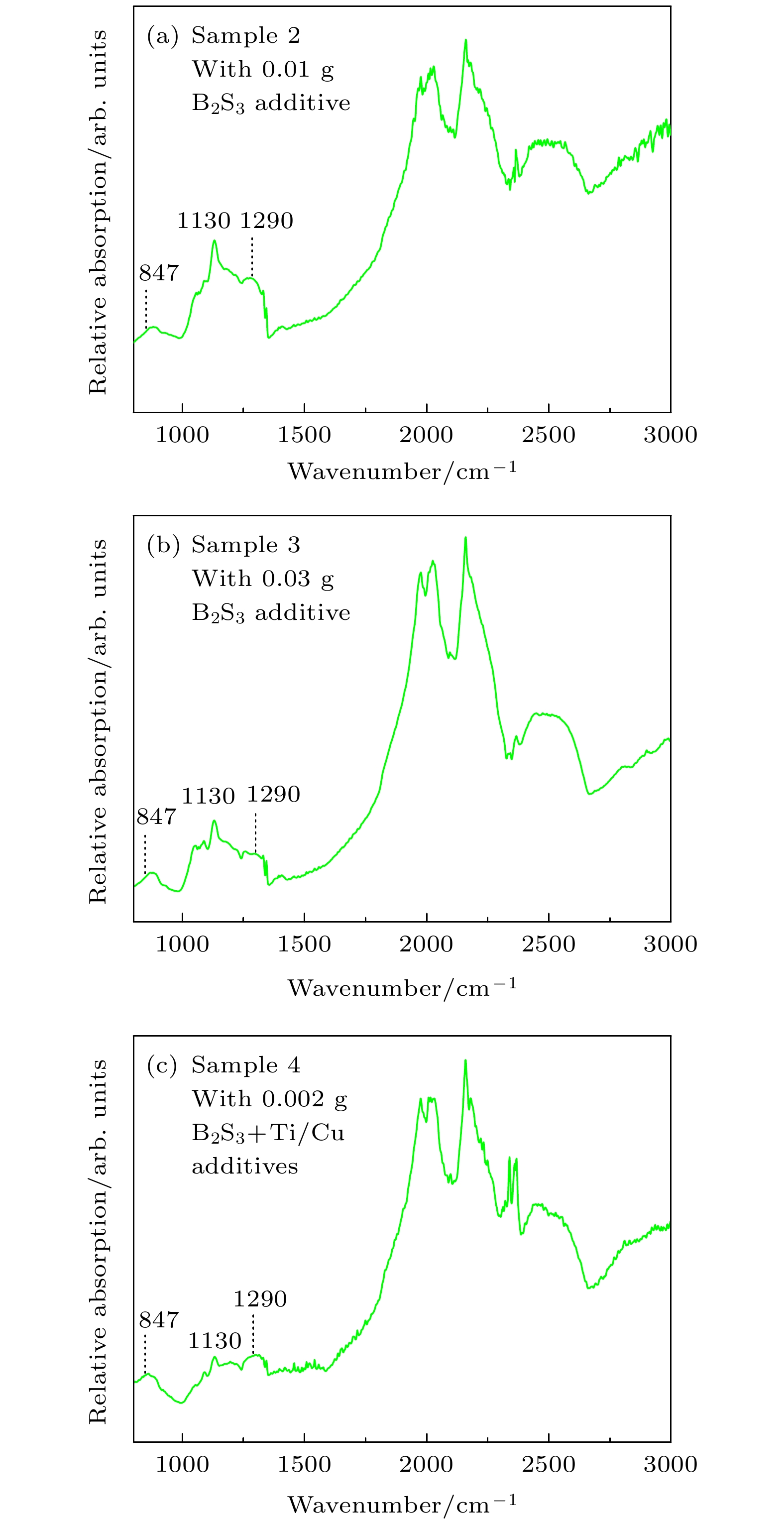-
Diamond is a kind of extremely functional material, which is widely used in the fields of industry, science and technology, military defense, medical and health, jewelry, and others. However, its application in the semiconductor field is still limited, because its electrical transport performance has not yet met the requirements of semiconductor devices. In order to improve the electrical transport performance of diamond as much as possible, the synthesis of diamond single crystal is studied by adding B2S3 to the synthesis system using temperature gradient growth (TGG) method at a pressure of 6.5 GPa in this work. The growth rate of the synthesized diamond crystal decreases from 2.19 mg/h to 1.26 mg/h, indicating that the growth rate of diamond is dependent not only on the growth driving force, but also on the impurity element in the synthetic cavity. Additionally, with the increase of additive dosage, the color of the synthesized diamond crystal changes from yellow to baby blue . Raman measurement results indicate that the obtained diamond appears as a single sp3 hybrid phase without the sp3 hybrid graphite phase. However, the corresponding Raman characteristic peak of the as-grown diamond crystal is located at about 1331 cm–1 and tends to move towards low wave number. According to Fourier Transform Infrared Spectrometer (FTIR) measurement results, the absorption peaks at 1130 cm–1 and 1344 cm–1 are attributed to nitrogen defects. It is found that the nitrogen defect concentration of the synthesized diamond crystal decreases gradually from about 300×10–6 to 60×10–6. Furthermore, the electrical transport performance of the synthesized diamond is characterized by Hall effect measurement. Diamond has insulating properties due to the absence of any additives in the synthetic cavity. However, the results indicate that when B2S3 is introduced into the synthetic system as additive, there is almost no difference in carrier Hall mobility, but the difference in carrier concentration is as high as two orders of magnitude. Furthermore, the resistivity of the synthesized [111]-oriented diamond crystal decreases to 45.4 Ω·cm, due to the addition of B2S3 to the synthesis system. However, it is worth noting that the resistivity of the diamond crystal synthesized with 0.002 g B2S3 and Ti/Cu additives in the synthesis system drops sharply to 0.43 Ω·cm. Therefore, the nitrogen defects in diamond will have an important effect on its conductivity. It provides an important experimental basis for applying diamond to semiconductor field.
-
Keywords:
- high pressure and high temperature /
- diamond /
- crystal defects
[1] Bhattacharyya P, Chen W, Huang X, et al. 2024 Nature 627 73
 Google Scholar
Google Scholar
[2] Tong K, Zhang X, Li Z H, et al. 2024 Nature 626 79
 Google Scholar
Google Scholar
[3] Rodrigo M A, Canizares P, Carretero A S, Saez C 2010 Catal. Today 151 173
 Google Scholar
Google Scholar
[4] Zhang D X, Zhao Q, Zang J H, Lu Y J, Dong L, Shan C X 2018 Carbon 27 170
[5] Huang G F, Jia X P, Li Y, Hu M H, Li Z C, Yan B M, Ma H A 2011 Chin. Phys. B 20 78103
 Google Scholar
Google Scholar
[6] Li Y, Chen X Z, Ran M W, She Y C, Xiao Z G, Hu M H, Wang Y, An J 2022 Chin. Phys. B 31 046107
 Google Scholar
Google Scholar
[7] Li Y, Jia X P, Hu M H, Liu X B, Yan B M, Zhou Z X, Fang C, Zhang Z F, Ma H A 2012 Chin. Phys. B 21 058101
 Google Scholar
Google Scholar
[8] Li Y, Jia X P, Song M S, Ma H A, Z X, Fang C, Wang F B, Chen N, Wang Y 2015 Mod. Phys. Lett. B 29 1550162
[9] Du J B, Liu H Z, Yang N, Chen X Z, Zong W J 2023 Appl. Surf. Sci. 637 157882
 Google Scholar
Google Scholar
[10] Li Y, Liao J H, Wang Y, She Y C, Xiao Z G, An J 2020 Opt. Mater. 101 109735
 Google Scholar
Google Scholar
[11] Song Y W, Fang C, Mu Y H, Li Y D, Shen W X, Zhang Z F, Zhang Y W, Qang Q Q, Wan B, Chen L C, Jia X P 2023 CrystEngComm 25 357
 Google Scholar
Google Scholar
[12] Ekimov E A, Sidorov1 V A, Bauer E D, Mel'nik N N, Curro N J, Thompson J D, Stishov1 S M 2004 Nature 428 542
[13] Zhang J Q, Ma H A, Jiang Y P, Liang Z Z, Tian Y, Jia X P 2007 Diamond Relat. Mater. 16 283
 Google Scholar
Google Scholar
[14] 肖宏宇, 李勇, 鲍志刚, 佘彦超, 王应, 李尚升 2023 72 020701
 Google Scholar
Google Scholar
Xiao H Y, Li Y, Bao Z G, She Y C, Wang Y, Li S S 2023 Acta Phys. Sin. 72 020701
 Google Scholar
Google Scholar
[15] Gheeraert E, Koizumi S, Teraj T, Kanda H, Nesladek M 2000 Diamond Relat. Mater. 9 948
 Google Scholar
Google Scholar
[16] Jackson K, Pederson M R, Harrison J G 1990 Phys. Rev. B 41 12641
 Google Scholar
Google Scholar
[17] Katayama-Yoshida H, Nishimatsu T, Yamamoto T, Orita N 2001 J. Phys. Conderns. Matter 13 8901
 Google Scholar
Google Scholar
[18] Liu X B, Chen X, Singh D J, Stern R A, Wu J S, Petitgrard S, Bina C R, Jacobsen S D 2019 PANS 116 7703
 Google Scholar
Google Scholar
[19] Hu X J, Li R B, Shen H S, Dai Y B, He X C 2014 Carbon 42 1501
[20] Li Y, Jia X P, Ma H A, Zhang J, Wang F B, Chen N, Feng Y G 2014 CrystEngComm 16 7547
 Google Scholar
Google Scholar
[21] 马利秋, 马红安, 肖宏宇, 李尚升, 李勇, 贾晓鹏 2010 科学通报 55 418
Ma L Q, Ma H A, Xiao H Y, Li S S, Li Y, Jia X P 2010 Chin. Sci. Bull. 55 418
[22] Li Y, Tan D B, Wang Q, Xiao Z G, Tian C H, Chen L 2020 Chin. Phys. B 29 098103
 Google Scholar
Google Scholar
[23] Liang Z Z, Jia X P, Ma H A, Zang C Y, Zhu P W, Guan Q F, Kanda H 2005 Diamond Relat. Mater. 14 1932
 Google Scholar
Google Scholar
[24] Catledge S A, Vohra Y K, Ladi R, Rai G 1996 Diam. Relat. Mater. 5 1159
 Google Scholar
Google Scholar
[25] Li Y, Jia X P, Yan B M, Zhou Z X, Fang C, Zhang Z F, Sun S S, Ma H A 2012 J. Crys. Growth 359 49
 Google Scholar
Google Scholar
-
表 1 金刚石合成实验参数
Table 1. Experimental parameters for diamond synthesis.
金刚石样品 B2S3/g 合成温度/℃ 生长时间/h 形貌 生长速率/(mg·h–1) 1 — 1330 21 六八面体 2.19 2 0.01 1330 21 六八面体 1.98 3 0.03 1325 21 六八面体 1.83 4 0.002+Ti/Cu 1335 21 六八面体 1.26 表 2 金刚石晶体Raman测试结果
Table 2. Raman measurement results of the synthesized diamond crystals.
金刚石样品 特征峰位/cm–1 FWHM/cm–1 内应力/MPa 1 1330.9 5.3370 382 2 1330.9 5.3175 382 3 1131.0 5.4276 347 4 1330.4 5.2285 555 表 3 金刚石电输运性能参数
Table 3. Electric transport performance parameters of the obtained diamond crystals.
样品 B2S3/
g电阻率/
(Ω·cm)载流子浓度/
cm–3迁移率/
(cm–2·v–1·s–1)类型 1 — — — — — 2 0.01 8.98×10 6.63×1014 1.05×102 p 3 0.03 4.54×10 2.81×1014 4.88×102 p 4 0.002+Ti/Cu 4.33×10–1 3.39×1016 4.25×102 p -
[1] Bhattacharyya P, Chen W, Huang X, et al. 2024 Nature 627 73
 Google Scholar
Google Scholar
[2] Tong K, Zhang X, Li Z H, et al. 2024 Nature 626 79
 Google Scholar
Google Scholar
[3] Rodrigo M A, Canizares P, Carretero A S, Saez C 2010 Catal. Today 151 173
 Google Scholar
Google Scholar
[4] Zhang D X, Zhao Q, Zang J H, Lu Y J, Dong L, Shan C X 2018 Carbon 27 170
[5] Huang G F, Jia X P, Li Y, Hu M H, Li Z C, Yan B M, Ma H A 2011 Chin. Phys. B 20 78103
 Google Scholar
Google Scholar
[6] Li Y, Chen X Z, Ran M W, She Y C, Xiao Z G, Hu M H, Wang Y, An J 2022 Chin. Phys. B 31 046107
 Google Scholar
Google Scholar
[7] Li Y, Jia X P, Hu M H, Liu X B, Yan B M, Zhou Z X, Fang C, Zhang Z F, Ma H A 2012 Chin. Phys. B 21 058101
 Google Scholar
Google Scholar
[8] Li Y, Jia X P, Song M S, Ma H A, Z X, Fang C, Wang F B, Chen N, Wang Y 2015 Mod. Phys. Lett. B 29 1550162
[9] Du J B, Liu H Z, Yang N, Chen X Z, Zong W J 2023 Appl. Surf. Sci. 637 157882
 Google Scholar
Google Scholar
[10] Li Y, Liao J H, Wang Y, She Y C, Xiao Z G, An J 2020 Opt. Mater. 101 109735
 Google Scholar
Google Scholar
[11] Song Y W, Fang C, Mu Y H, Li Y D, Shen W X, Zhang Z F, Zhang Y W, Qang Q Q, Wan B, Chen L C, Jia X P 2023 CrystEngComm 25 357
 Google Scholar
Google Scholar
[12] Ekimov E A, Sidorov1 V A, Bauer E D, Mel'nik N N, Curro N J, Thompson J D, Stishov1 S M 2004 Nature 428 542
[13] Zhang J Q, Ma H A, Jiang Y P, Liang Z Z, Tian Y, Jia X P 2007 Diamond Relat. Mater. 16 283
 Google Scholar
Google Scholar
[14] 肖宏宇, 李勇, 鲍志刚, 佘彦超, 王应, 李尚升 2023 72 020701
 Google Scholar
Google Scholar
Xiao H Y, Li Y, Bao Z G, She Y C, Wang Y, Li S S 2023 Acta Phys. Sin. 72 020701
 Google Scholar
Google Scholar
[15] Gheeraert E, Koizumi S, Teraj T, Kanda H, Nesladek M 2000 Diamond Relat. Mater. 9 948
 Google Scholar
Google Scholar
[16] Jackson K, Pederson M R, Harrison J G 1990 Phys. Rev. B 41 12641
 Google Scholar
Google Scholar
[17] Katayama-Yoshida H, Nishimatsu T, Yamamoto T, Orita N 2001 J. Phys. Conderns. Matter 13 8901
 Google Scholar
Google Scholar
[18] Liu X B, Chen X, Singh D J, Stern R A, Wu J S, Petitgrard S, Bina C R, Jacobsen S D 2019 PANS 116 7703
 Google Scholar
Google Scholar
[19] Hu X J, Li R B, Shen H S, Dai Y B, He X C 2014 Carbon 42 1501
[20] Li Y, Jia X P, Ma H A, Zhang J, Wang F B, Chen N, Feng Y G 2014 CrystEngComm 16 7547
 Google Scholar
Google Scholar
[21] 马利秋, 马红安, 肖宏宇, 李尚升, 李勇, 贾晓鹏 2010 科学通报 55 418
Ma L Q, Ma H A, Xiao H Y, Li S S, Li Y, Jia X P 2010 Chin. Sci. Bull. 55 418
[22] Li Y, Tan D B, Wang Q, Xiao Z G, Tian C H, Chen L 2020 Chin. Phys. B 29 098103
 Google Scholar
Google Scholar
[23] Liang Z Z, Jia X P, Ma H A, Zang C Y, Zhu P W, Guan Q F, Kanda H 2005 Diamond Relat. Mater. 14 1932
 Google Scholar
Google Scholar
[24] Catledge S A, Vohra Y K, Ladi R, Rai G 1996 Diam. Relat. Mater. 5 1159
 Google Scholar
Google Scholar
[25] Li Y, Jia X P, Yan B M, Zhou Z X, Fang C, Zhang Z F, Sun S S, Ma H A 2012 J. Crys. Growth 359 49
 Google Scholar
Google Scholar
Catalog
Metrics
- Abstract views: 2558
- PDF Downloads: 90
- Cited By: 0














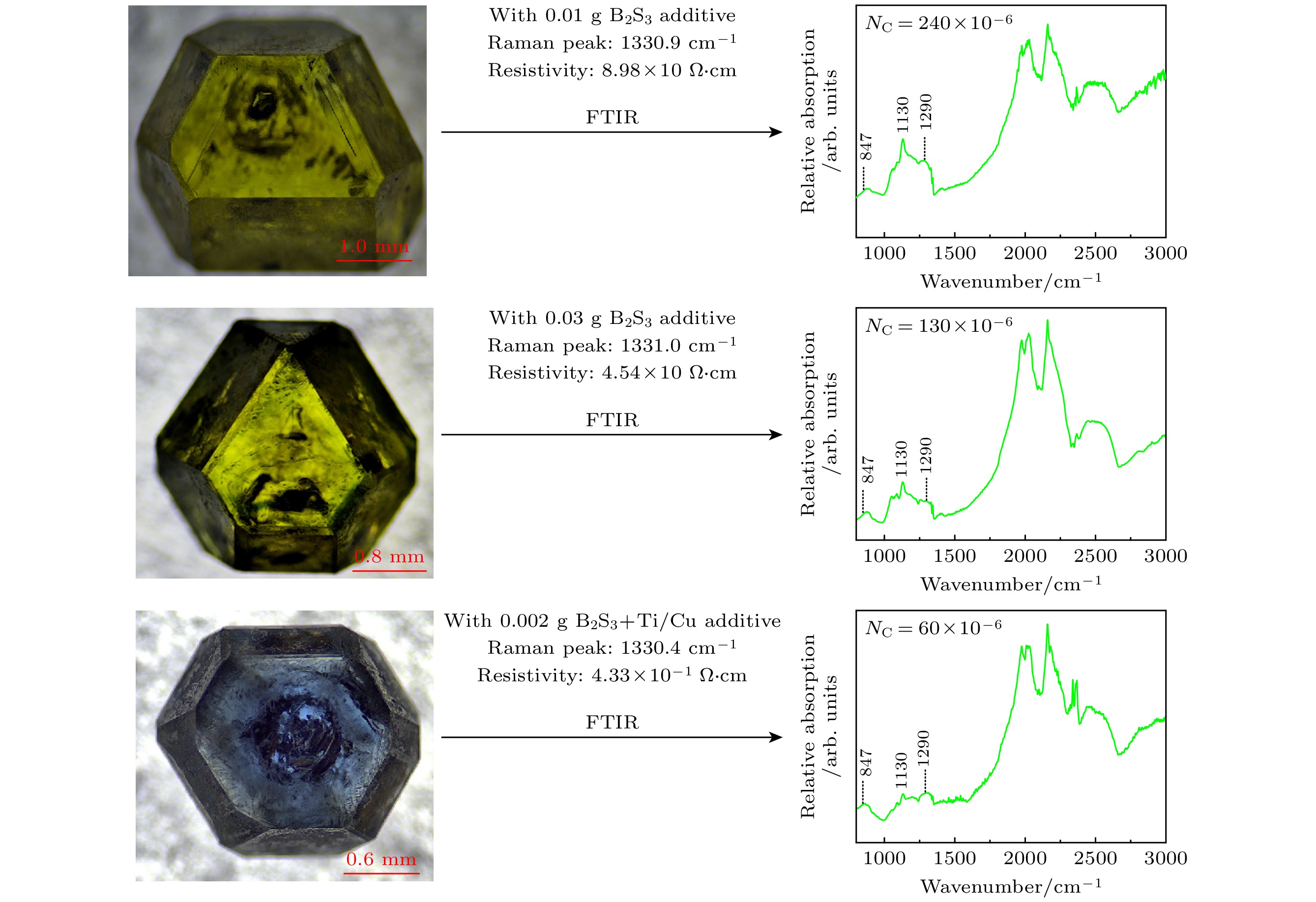
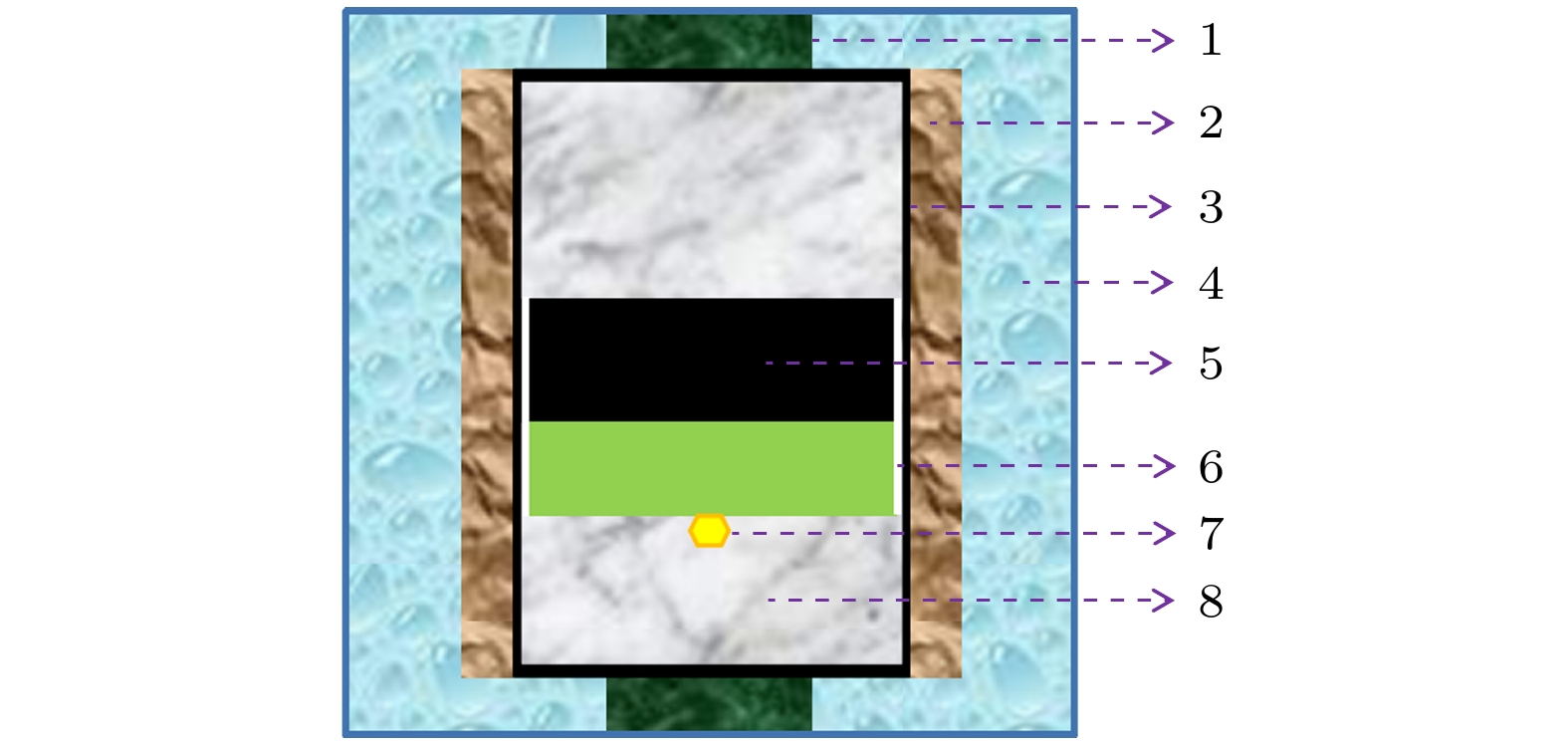
 DownLoad:
DownLoad:
